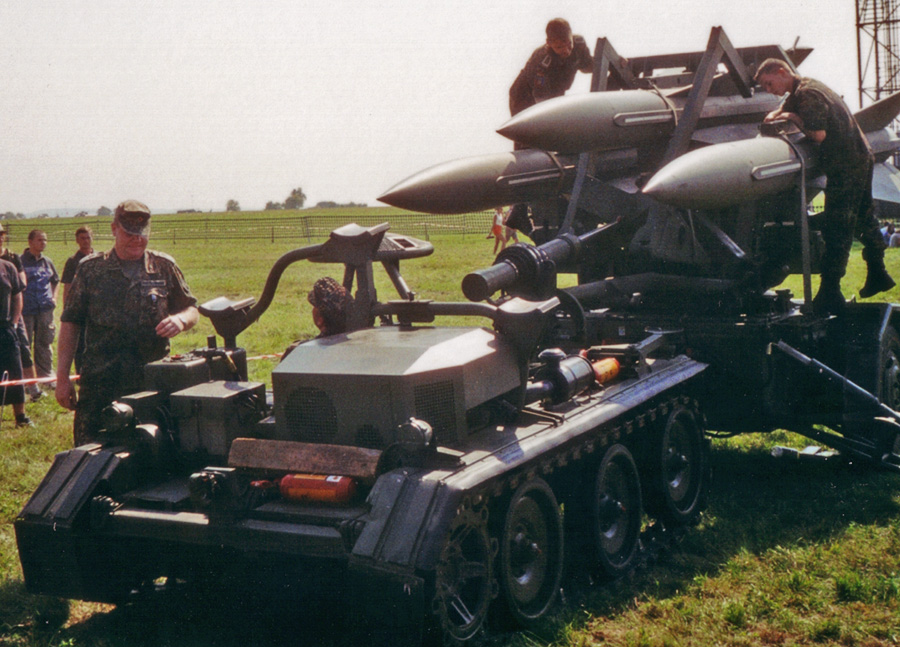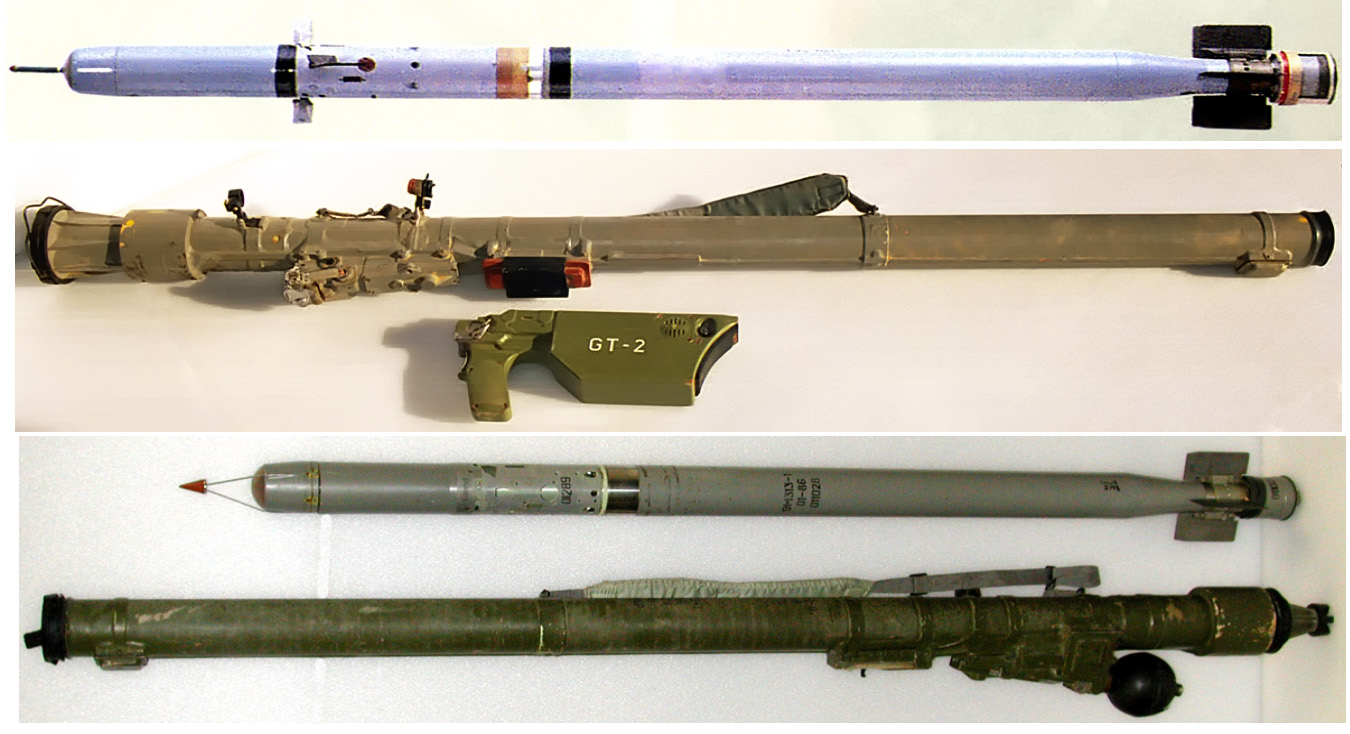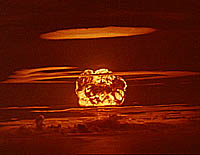|
List Of Mil Mi-24 Variants
The Soviet and later Russian Mil Mi-24 helicopter has been produced in many variants, as described below. History In 1966, Soviet aircraft designer Mikhail Mil created a mock-up design of a new helicopter (derived from the Mil Mi-8) which was made with the intent of fulfilling both the role of a close air support aircraft as well as being able to transport infantry into combat. This prototype design was designated the V-24, and in 1968 a directive was given to proceed with the development of the helicopter. The Mi-24 went from the drawing board to the first test-flights in less than eighteen months, with the first models being delivered to the Soviet Armed Forces for evaluation in 1971. As a result of the speedy development, the initial Mi-24 variants had a number of problems: lateral roll, weapon sighting issues, and a limited field of view for the pilot. A later redesign of the Mi-24's front section solved most of these problems. List of variants ;A-10: Designation given to ... [...More Info...] [...Related Items...] OR: [Wikipedia] [Google] [Baidu] |
Mil Mi-24 Early Series Comparison Line Drawing
Mil, mil, or MIL may refer to: Places * Mil, Syria, a village in Syria * Mil, Azerbaijan, a municipality in Beylagan Rayon * Mil, Markazi, a village in Markazi Province, Iran * Metropolitan area of Milan ( IATA code: MIL), Italy * Mill Hill Broadway railway station (National Rail station code: MIL), England * Miltenberg (district), (German vehicle registration code: MIL) * A common abbreviation for the U.S. city of Milwaukee, Wisconsin and its major professional sports teams: ** Milwaukee Brewers, the city's Major League Baseball team ** Milwaukee Bucks, the city's National Basketball Association team Business and organizations * Marine Industries Limited, a Canadian shipbuilder * Microsystems International Limited, a former Canadian semiconductor device manufacturer * Mil Moscow Helicopter Plant, a Russian helicopter manufacturer * ''Movimiento Ibérico de Liberación'' (Iberian Liberation Movement), a Catalan anti-Francoist group from 1971 to 1973 * ''Mouvement initiative et li ... [...More Info...] [...Related Items...] OR: [Wikipedia] [Google] [Baidu] |
MIM-23 Hawk
The Raytheon MIM-23 HAWK ("Homing all the way killer") is an American medium-range surface-to-air missile. It was designed to be a much more mobile counterpart to the MIM-14 Nike Hercules, trading off range and altitude capability for a much smaller size and weight. Its low-level performance was greatly improved over Nike through the adoption of new radars and a continuous wave semi-active radar homing guidance system. It entered service with the US Army in 1959. In 1971 it underwent a major improvement program as the Improved Hawk, or I-Hawk, which made several improvements to the missile and replaced all of the radar systems with new models. Improvements continued throughout the next twenty years, adding improved ECCM, a potential home-on-jam feature, and in 1995, a new warhead that made it capable against short-range tactical missiles. ''Jane's'' reported that the original system's single shot kill probability was 0.56; I-Hawk improved this to 0.85. Hawk was superseded b ... [...More Info...] [...Related Items...] OR: [Wikipedia] [Google] [Baidu] |
MAKS (air Show)
MAKS (russian: МАКС, russian: label=short for, Международный авиационно-космический салон, Mezhdunarodnyj aviatsionno-kosmicheskij salon, "International Aviation and Space Show") is an international air show held at Zhukovsky International Airport, the home of the Gromov Flight Research Institute in Zhukovsky, southeast of Moscow, Russia. The event was organized by the Russian Ministry of Industry and Trade until 2009, more recently by the Government of Moscow and Aviasalon. The first show, Mosaeroshow-92, was held in 1992. Since 1993, the air show was renamed as MAKS and is held biennially on odd years. MAKS is an important event for the Russian aviation industry and the Commonwealth of Independent States. Although it started mainly as an entertainment event, the show soon became a marketplace where Russian aerospace companies could negotiate export contracts and Russian air carriers could make foreign contacts. Background and histo ... [...More Info...] [...Related Items...] OR: [Wikipedia] [Google] [Baidu] |
Active Electronically Scanned Array
An active electronically scanned array (AESA) is a type of phased array antenna, which is a computer-controlled array antenna in which the beam of radio waves can be electronically steered to point in different directions without moving the antenna. In the AESA, each antenna element is connected to a small solid-state transmit/receive module (TRM) under the control of a computer, which performs the functions of a transmitter and/or receiver for the antenna. This contrasts with a passive electronically scanned array (PESA), in which all the antenna elements are connected to a single transmitter and/or receiver through phase shifters under the control of the computer. AESA's main use is in radar, and these are known as active phased array radar (APAR). The AESA is a more advanced, sophisticated, second-generation of the original PESA phased array technology. PESAs can only emit a single beam of radio waves at a single frequency at a time. The PESA must utilize a Butler matrix ... [...More Info...] [...Related Items...] OR: [Wikipedia] [Google] [Baidu] |
FLIR
Forward-looking infrared (FLIR) cameras, typically used on military and civilian aircraft, use a thermographic camera that senses infrared radiation. The sensors installed in forward-looking infrared cameras, as well as those of other thermal imaging cameras, use detection of infrared radiation, typically emitted from a heat source (thermal radiation), to create an image assembled for video output. They can be used to help pilots and drivers steer their vehicles at night and in fog, or to detect warm objects against a cooler background. The wavelength of infrared that thermal imaging cameras detect is 3 to 12 μm and differs significantly from that of night vision, which operates in the visible light and near-infrared ranges (0.4 to 1.0 μm). Design Infrared light falls into two basic ranges: ''long-wave'' and ''medium-wave''. Long-wave infrared (LWIR) cameras, sometimes called "far-infrared", operate at 8 to 12 μm and can see heat sources, such as hot e ... [...More Info...] [...Related Items...] OR: [Wikipedia] [Google] [Baidu] |
ATGM
An anti-tank guided missile (ATGM), anti-tank missile, anti-tank guided weapon (ATGW) or anti-armor guided weapon is a guided missile primarily designed to hit and destroy heavily armored military vehicles. ATGMs range in size from shoulder-launched weapons, which can be transported by a single soldier, to larger tripod-mounted weapons, which require a squad or team to transport and fire, to vehicle and aircraft mounted missile systems. Earlier man-portable anti-tank weapons like anti-tank rifles and magnetic anti-tank mines, generally had very short range, sometimes on the order of metres or tens of metres. Rocket-propelled high-explosive anti-tank (HEAT) systems appeared in World War II and extended range to the order of hundreds of metres, but accuracy was low and hitting targets at these ranges was largely a matter of luck. It was the combination of rocket propulsion and remote wire guidance that made the ATGM much more effective than these earlier weapons, and gave lig ... [...More Info...] [...Related Items...] OR: [Wikipedia] [Google] [Baidu] |
9K38 Igla
The 9K38 Igla (russian: Игла́, "needle", NATO reporting name SA-18 Grouse) is a Russian/Soviet man-portable infrared homing surface-to-air missile (SAM) system. A simplified, earlier version is known as the 9K310 Igla-1 (NATO: SA-16 Gimlet), and the latest variant is the 9K338 Igla-S (SA-24 Grinch). The Igla-1 entered service in 1981, the Igla in 1983, and the Igla-S in 2004. The Igla has been supplemented by the 9K333 Verba since 2014.New Russian Verba MANPADS will replace Igla-S - Armyrecognition.com, 15 September 2014 History The development of the Igla short-range man-portable air defense system ( MA ...[...More Info...] [...Related Items...] OR: [Wikipedia] [Google] [Baidu] |
Shturm
9K114 ''Shturm'' - Weaponsystems.net (russian: 9К114 «Штурм» - "Assault", borrowed from German "Sturm" - Storm/Assault) - is a radio guided system of the . Its designation is 9K114. Its |
9M120 Ataka
The 9M120 ''Ataka'' (russian: Атака; ''Attack'') is an anti-tank guided missile (ATGM) originating from the Soviet Union. The NATO reporting name of the 9M120 missile is the AT-9 ''Spiral-2''. It is the next major generation in the 9K114 Shturm (AT-6 Spiral) family. The missile has radio command guidance and is also a beam riding SACLOS. This missile's primary variant was designed to defeat tanks with composite armour and explosive reactive armor. The 9M120 Ataka system is often confused with the 9K121 Vikhr system, despite being different weapons systems developed by different companies. The former was designed by the KBM machine-building design bureau and manufactured by the Degtyarev plant. According to the Stockholm International Peace Research Institute, Russia exported the Ataka ATGM to Iran, Kazakhstan, and Slovenia. Development The 9M120 missile was developed by the Kolomna engineering design bureau, located in Kolomna. This company already designed previous ATGMs, ... [...More Info...] [...Related Items...] OR: [Wikipedia] [Google] [Baidu] |
Chernobyl Disaster
The Chernobyl disaster was a nuclear accident that occurred on 26 April 1986 at the No. 4 reactor in the Chernobyl Nuclear Power Plant, near the city of Pripyat in the north of the Ukrainian SSR in the Soviet Union. It is one of only two nuclear energy accidents rated at seven—the maximum severity—on the International Nuclear Event Scale, the other being the 2011 Fukushima nuclear disaster in Japan. The initial emergency response, together with later decontamination of the environment, involved more than 500,000 personnel and cost an estimated 18 billion roubles—roughly US$68 billion in 2019, adjusted for inflation. The accident occurred during a safety test meant to measure the ability of the steam turbine to power the emergency feedwater pumps of an RBMK-type nuclear reactor in the event of a simultaneous loss of external power and major coolant leak. During a planned decrease of reactor power in preparation for the test, the operators accidentally dropp ... [...More Info...] [...Related Items...] OR: [Wikipedia] [Google] [Baidu] |
Weapons Of Mass Destruction
A weapon of mass destruction (WMD) is a chemical, biological, radiological, nuclear, or any other weapon that can kill and bring significant harm to numerous individuals or cause great damage to artificial structures (e.g., buildings), natural structures (e.g., mountains), or the biosphere. The scope and usage of the term has evolved and been disputed, often signifying more politically than technically. Originally coined in reference to aerial bombing with chemical explosives during World War II, it has later come to refer to large-scale weaponry of warfare-related technologies, such as chemical, biological, radiological, or nuclear warfare. Early uses of this term The first use of the term "weapon of mass destruction" on record is by Cosmo Gordon Lang, Archbishop of Canterbury, in 1937 in reference to the aerial bombing of Guernica, Spain: At the time, nuclear weapons had not been developed. Japan conducted research on biological weapons (see Unit 731), and chemical ... [...More Info...] [...Related Items...] OR: [Wikipedia] [Google] [Baidu] |
Mil Mi-28
The Mil Mi-28 (NATO reporting name "Havoc") is a Russian all-weather, day-night, military tandem, two-seat anti-armor attack helicopter. It is an attack helicopter with no intended secondary transport capability, better optimized than the Mil Mi-24 gunship for the role. It carries a single gun in an undernose barbette, plus external loads carried on pylons beneath stub wings. Development Origins In 1972, following the completion of the Mil Mi-24, development began on a unique attack helicopter with transport capability. The new design had a reduced transport capability (3 troops instead of 8) and omitted the cabin to provide better overall performance and higher top speed. Improved performance was important for its intended role fighting against tanks and enemy helicopters and covering helicopter landing operations. Initially, many different designs were considered, including an unconventional project with two main rotors, placed with engines on tips of wings (in perpendicular ... [...More Info...] [...Related Items...] OR: [Wikipedia] [Google] [Baidu] |


_(526-04).jpg)





.jpg)